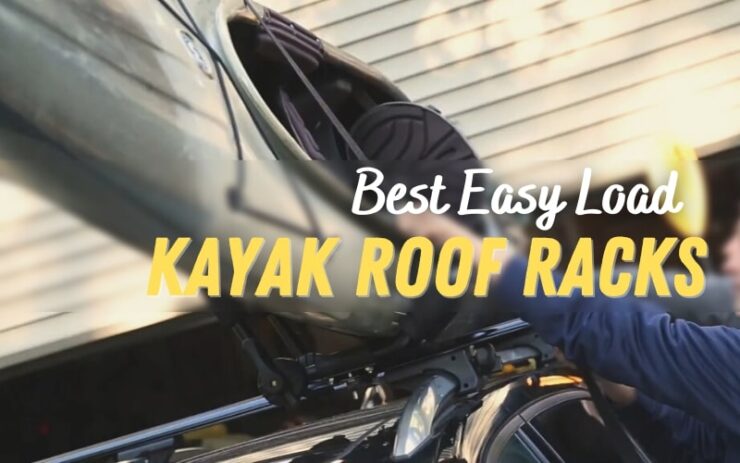Handling a paddling vessel has to be the worst thing about owning it, which is what most kayakers agree on. The fact that you have your own kayak to take out and enjoy the water from is great. You can use it in a wide variety of ways, it is a physical activity as well as a recreational way to enjoy the outdoors, and it can help you make other hobbies better and more optimal. However, the fact that a kayak is difficult to handle no matter its size or weight cannot be overlooked.
Due to their cumbersome nature, even lighter kayaks are troublesome to carry and transport. They are also a headache to store especially if you lack inside storage space like a garage or a shed, but that is a story for another article. When it comes to transportation and carrying, there is a lot to be desired in terms of proper kayak handling.
The reality of the situation is such that everyone who wants to go paddling needs a way to get the kayak to the water first. This, of course, usually implies driving there and using the car to transport the craft.
Table of Contents
ToggleKayak Car Transport
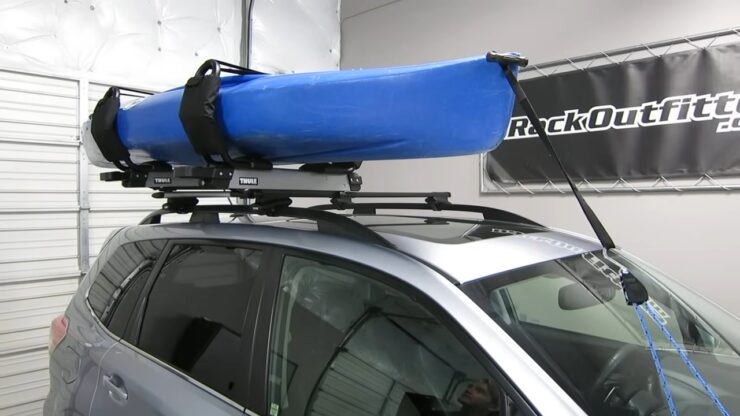
Overall, there are three different ways in which a kayak can be transported using a personal vehicle. Depending on the type of kayak you have, as well as the vehicle type and where you are going, you can choose one of three distinct ways.
The first and the least common is putting the kayak inside the car. To do this, you either need a small kayak that can fit through the trunk and over the back seats. This is not always viable because kayaks are usually too big for regular sedans, coupes, and even SUVs.
A far more common solution comes in the form of special trailers designed to be used for kayak transportation. These trailers are made specifically for paddling boats and they make the entire experience much easier and better.
However, this is also not a good idea or even a possible scenario in situations where there is rough terrain. No matter how great kayak trailers are, they have their limitations. Also, they are a big investment and you may even need special permits to tow them with your vehicle.
So if it is barely possible to fit a kayak inside of the cabin of the car and the trailer is not always applicable, what else is there? Well, the best option out of the tree, and by far the most common kayak transportation tool is the roof rack. Fortunately there are ways you can transport your kayak without a roof rack, but they are not as effective or safe.
As its name suggests, it attaches to the roof of the vehicle and therefore allows easy transportation of kayaks and many other recreational vehicles and devices should you ever have the need for them. In this article, we talk about roof racks, particularly those that favorise easy loading.
Buyer’s Guide – Things to Consider Before Purchasing
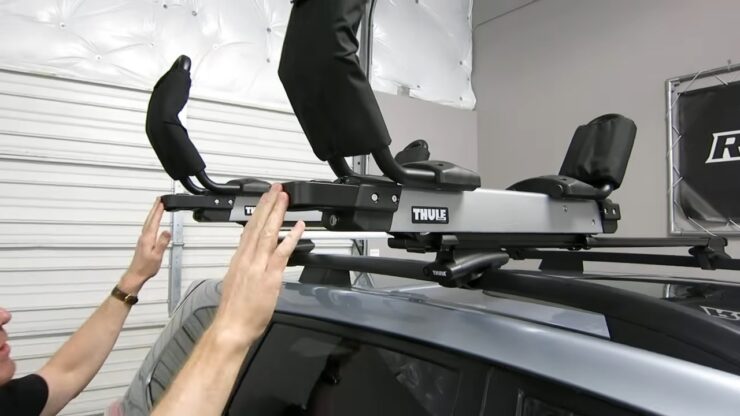
Kayak roof racks are an essential piece of equipment for anyone who enjoys the sport of kayaking and wants to transport their kayak from one location to another. These racks provide a safe and secure way to attach your kayak to the roof of your vehicle, allowing you to transport it easily to the river, lake, or ocean.
There are many different types of kayaks and different types of roof racks available on the market, and choosing the right one can be a daunting task. The first thing to consider is the type of vehicle you have and whether or not it already has factory-installed roof crossbars. If your vehicle does not have them, you will need to purchase a separate one and have it installed by a professional.
Once you have this installed on your vehicle, you will need to choose the type of kayak roof rack that is best suited for your needs. There are two main types of kayak roof racks: hard-shell and soft-shell. Hard-shell kayak roof racks are designed to hold rigid kayaks, such as those made from fiberglass or plastic. These racks typically feature a pair of J-shaped brackets that the kayak sits in, with straps or clips that hold it securely in place.
Soft-shell kayak roof racks, on the other hand, are designed to hold inflatable or folding kayaks. These racks typically feature a series of straps or loops that the kayak is placed on top of and secured with. Both types of kayak roof racks have their own unique benefits and drawbacks, and it is important to consider which one is right for you based on the type of kayak you have and your personal preferences.
Benefits of Kayak Roof Racks
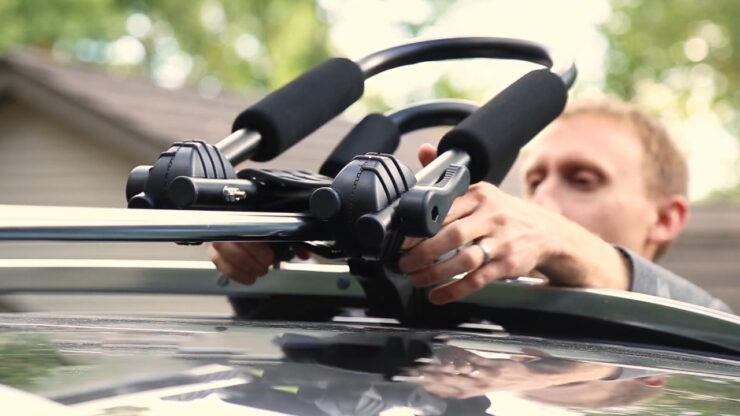
One of the main benefits of using a kayak roof rack is the convenience it provides. With a roof rack, you no longer have to worry about finding a place to store your kayak when it is not in use. Instead, you can simply attach it to the roof of your vehicle and transport it wherever you want to go. This is especially useful for those who do not have a lot of storage space at home or who live in an apartment and do not have access to a garage or shed.
Another benefit of kayak roof racks is the security they provide. When you transport your kayak on the roof of your vehicle, it is much less likely to be damaged or stolen than if it were left outside or in the bed of a pickup truck. Additionally, roof racks are designed to withstand the wind and weather, so you can be confident that your kayak will stay in place and be protected from the elements during transport.
There are also several safety considerations to keep in mind when using a kayak roof rack. It is important to make sure that the rack is properly installed and tightened down to ensure that it is secure. You should also be sure to follow the manufacturer’s guidelines for weight limits and load distribution when attaching your kayak to the roof rack.
Finally, it is a good idea to use a secondary method of securing your kayak, such as bungee cords or a strap, to add an extra layer of protection and keep it from shifting during transport.
Top Picks Kayak Roof Racks – Reviews
In the following section, you will see some of the roof racks with the easiest loading system made for maximum convenience and handling. It is often the case with roof racks that the kayaker cannot do it alone as the kayak is too long or heavy to carefully and safely push onto the roof. With these racks, however, that is not the case.
1. Thule Hullavator Pro
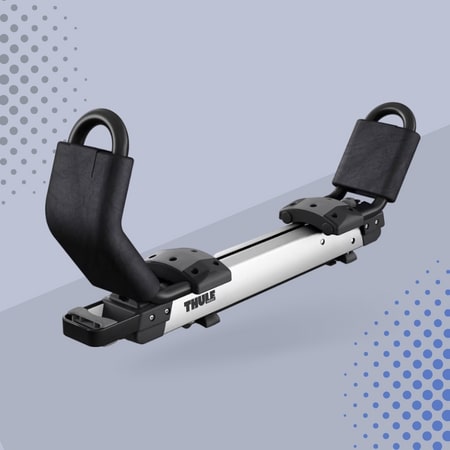
This is arguably the most genius design of any car roof rack meant specifically for kayaks and a clear favorite of most kayakers. If you have the need of a solution that will be absolutely no struggle and even a fun way to raise the boat to the top of your car, this is it right here. From the first look at this rack system, it is more than clear what its main selling point is, and it is marvelous.
The racks attach right to the existing crossbars of your vehicle. Once you install them, the magic begins. The racks move down to the side of the car right to the waist level which means there is no struggle to place the kayak. Simply lift it for a bit, about 3 feet, and place it on the racks. When you do so, it is easy to push the racks back to the top of the car. Easy peasy. Gas lift-assist is responsible for this and the system supports up to 40 pounds.
The cradle is aluminum with double-coated steel and is resistant to corrosion. There are eight padded touchpoints for the support and safety of the kayak. Durable, long-lasting, and sturdy, it is among the best and most secure roof racks on the market. The cradles are also adjustable for various kayak widths. The maximum capacity of the racks, when the lowering system is not used, is 75 pounds. It is made for a single kayak and it is a great tool.
- Most popular option
- Great design
- Quick and effortless loading
- Good compatibility
- Raising weight lower than total weight supported
- Very expensive
2. INNO INA 453 Kayak Lifter
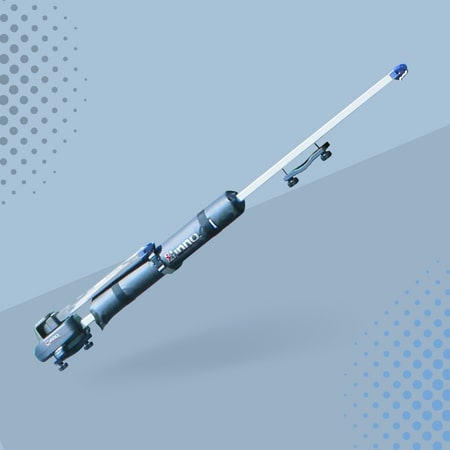
Here is another genius solution to easily lift up the kayak to the roof without using pure muscle. It attaches to crossbars, factory-installed, or custom aftermarket, and it is compatible with round and square models. It goes right at the end of the bars parallel to the car. It is important to pick the side you want to raise the kayak from if you have any preferences there. The rack weighs 8.8 pounds and it can also be used for skis, snowboards, surfboards, and canoes.
The core of this kayak lifer is the swing-out arm that extends far to the side of the car (28 inches) and prevents hitting, rubbing, and scraping of the kayak against the paint job and the windows. The arm has a strap that is attached to the hull, which does need to be lifted on one side to the height of the roof. However, you can lean it against the arm and then just push the kayak all the way to the roof. When done in one move, it is very easy and quick.
- Good design
- Quick and easy loading
- Affordable
- Simpler than it sounds
- Still requires lifting
3. Malone Telos XL Loading Assist and J-Loader Combination
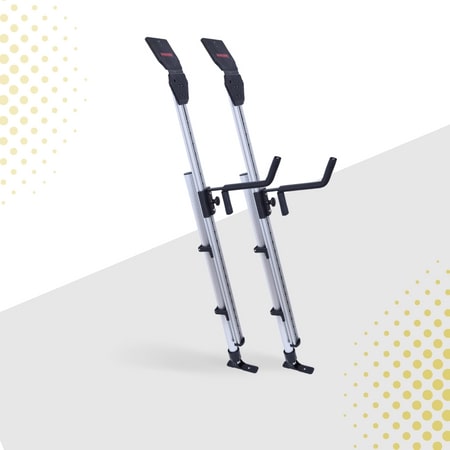
Since these two products by the Malone brand are sold separately but work very well together, we have them as a tandem at the third spot on the list. The J-loaders need to already be installed on the crossbars of your car and then you can use the assist module to bring the kayak up more easily. The assist module attaches to the J-holders and extends all the way down to the ground at a certain angle.
When you have everything attached, the kayak is loaded onto the arms of the assist and slid up. It can also be used to unload the kayak more easily when you are done for the day. The operation does require some repetition with both arms of the assist module, but it is all very quick and easy.
The arms are 60 inches long and they support up to 70 pounds. Resistant to corrosion and coated in steel, aluminum is the perfect material choice. It does take longer to get the kayak up than with the previous two options, but it is very easy.
- Good brand
- Good weight support
- Simple and easy to use
- Sold separately, two items are needed to make it work
- Slow loading speed
4. SELEWARE Roller
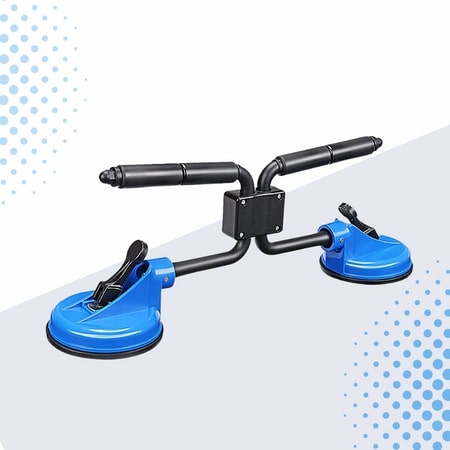
The fourth and final solution on the list is a roller kayak roof rack, one of the fan-favorite ways to put anything on the roof should the vehicle and the thing being loaded up allow it. This is also a great option for smaller cars and SUVs because of the size and design of the whole tool.
Unlike the rest, these do not attach to the crossbars, but you still do need to have them pre-installed because of the kayak. Instead, they make use of two heavy-duty suction cups that are pressed in place and pushed down. This is best done on the rear windshield, which needs a proper soft towel wipe before use.
The main part in charge of the kayak loading mechanism is the boat roller, a heavy-duty one at that since it can hold 170 pounds. The roller has nylon bushing for protection and grip as you roll the kayak over them into the right position.
The bracket is made of steel rods, on top of which are 4 nylon rollers. The roller is foldable too. Once you have it attached, simply place the front end of the kayak on the rollers and push the back end until it is fully on the roof. Since this is just a loading mechanism, you will need to secure the kayak to your crossbars or another roof rack more thoroughly, with additional straps and tie-downs.
- Superb weight support
- Suction cup attachment system
- Roller works great
- Superb weight support
- Suction cup attachment system
- Roller works great
Conclusion and Takeaways
Whether it is a rack that lowers to waist level, one with a swing-out arm to lean the kayak on, a duo of rolls that bounce off each other well, or a roller with suction cups, these easy-to-load kayak roof racks are all amazing in their own right.
Not all of them are suitable for all kayaks, nor will they be the best fit for any vehicle. It is up to you to pick and choose which one goes well with your car/kayak combo. One thing that is sure is that your struggles with kayak loading are over whichever you end up getting.
Meet Maria Alexander, the fearless adventurer steering the ship at KayakPaddling.net. Her mission? To convince you that life’s too short for dry land and that the best stories always start with “So there I was in my kayak…”
Related Posts:
- 16 Best Kayak For Beginners 2024 - Kayaking Adventure Gear
- 15 Best Baitcasting Reel Under $100 2024 - Improve…
- 10 Best Fishing Kayak Under $1000 2024 -…
- 17 Best Trolling Reels 2024 - Enjoy your Fishing Adventure
- 16 Best Kayak Fishing Paddles 2024 - Affordable Fishing Gear
- 12 Best Motorized Kayak 2024 - Start Your Aquatic Adventure!

